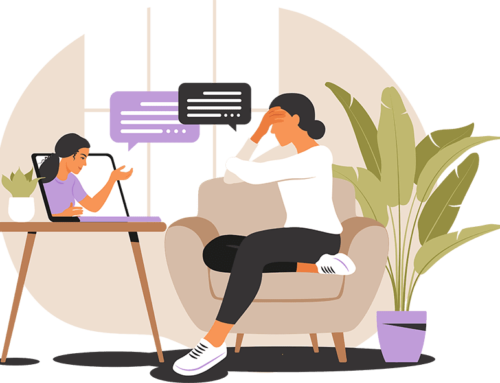Our lives are increasingly tethered to screens. Between constant work emails, endless scrolling through social media, and the lure of notifications at all hours, it’s no surprise that many of us feel mentally drained. This phenomenon, digital burnout, is more than just feeling tired. It’s an overwhelming physical, mental, and emotional exhaustion caused by persistent digital overload.
If you feel like your digital life is taking a toll on your well-being, you’re not alone.
What Is Digital Burnout?
Digital burnout refers to the exhaustion experienced from prolonged exposure to technology and digital demands. While technology connects us and simplifies our lives in many ways, it can also create stress. Between remote work blurring the lines between office and home, notifications demanding our attention, and the pressure of maintaining a polished online persona, our brains often don’t get a chance to rest.
Unlike temporary fatigue, digital burnout can lead to ongoing feelings of hopelessness, disengagement, and even physical symptoms like headaches or insomnia. It’s a growing concern in a world where staying “online” feels like both an obligation and a necessity.
The World Health Organization (WHO) has recognized burnout as an occupational phenomenon, and while digital burnout isn’t exclusively work-related, the principles apply. Our constant connectivity is pushing us past the point of healthy engagement.
Who Is Most Affected by Digital Burnout?
Digital burnout can impact anyone, but some groups may be more vulnerable, including:
- Remote workers who find it hard to unplug after work.
- Parents juggling work emails alongside children’s endless stream of notifications.
- Young adults are caught between academic pressures and constant connection.
No matter the demographic, recognizing the triggers and effects of digital burnout is key to regaining your equilibrium.
Common Signs of Digital Burnout
Sometimes, we’re so immersed in our daily routines that we don’t notice digital burnout creeping in. Identifying the common signs early can make a huge difference. Here’s what to look out for:
- Constant Fatigue
- Difficulty Concentrating
- Irritability or Mood Swings
- Physical Discomfort
- Decreased Productivity
- Social Withdrawal
How to Protect Your Mental Health
Since technology is integral to our daily lives, avoiding digital burnout isn’t about eliminating screens. Instead, it’s about creating boundaries and knowing when to step back. Here are some practical steps you can take to safeguard your mental well-being.
1. Set Technology Boundaries
Create designated times to disconnect from your devices. For example, commit to not checking your work emails after a particular hour or implement a “no phone” rule during meals. Setting healthy boundaries ensures that devices don’t dominate every aspect of your life.
2. Adopt a Digital Detox Routine
Scheduling regular time away from screens can help reset your mind. Whether a tech-free weekend or an unplugged evening, intentional detachment allows your brain to decompress.
3. Use Tech Mindfully
Instead of going down endless scrolling rabbit holes, be intentional with your screen time. Limit social media usage to specific periods each day or use apps like “Screen Time” (iOS) or “Digital Wellbeing” (Android) to monitor and manage your digital habits.
4. Prioritize Real-World Connections
While technology helps us stay connected, nothing beats in-person relationships—schedule face-to-face meetups or phone calls instead of relying solely on messages and online chats.
5. Practice Screen-Friendly Ergonomics
Reduce physical discomfort with ergonomic setups for your devices. Invest in blue-light glasses, adjust screen brightness, or try the 20-20-20 rule: every 20 minutes, look at something 20 feet away for 20 seconds to ease eye strain.
6. Seek Support When Needed
Burnout can feel overwhelming, but you don’t have to tackle it alone. A mental health professional can help you create strategies to reduce stress, develop resilience, and guide you toward a healthier digital relationship.
At Aspire, our resiliency-focused therapists in Raleigh, NC, and Durham, NC, specialize in helping individuals find balance in today’s demanding world. Whether through in-person or online therapy, we work with you to create tools and practices that help you achieve your goals.
Building Resilience in a Digital Age
Digital burnout is real, but it doesn’t need to define your life. Taking conscious steps to reduce your digital load and prioritize your wellbeing is essential for maintaining a healthy relationship with technology.
Remember, making lasting changes takes time. Start small, and don’t hesitate to seek guidance to support your progress.
Need help on where to start? Aspire is here to help you reclaim your mental health, one connection at a time. Contact us today to learn more about our services!





